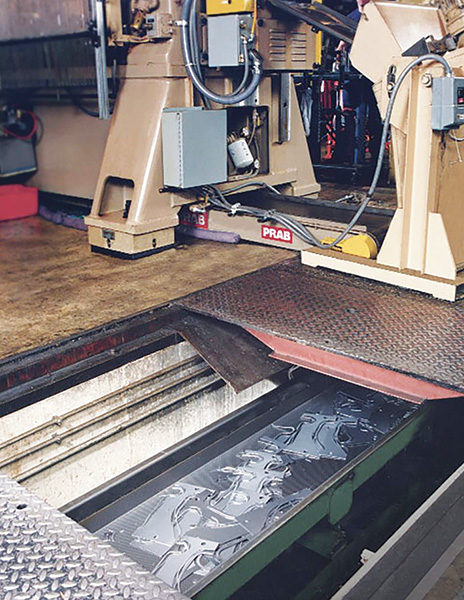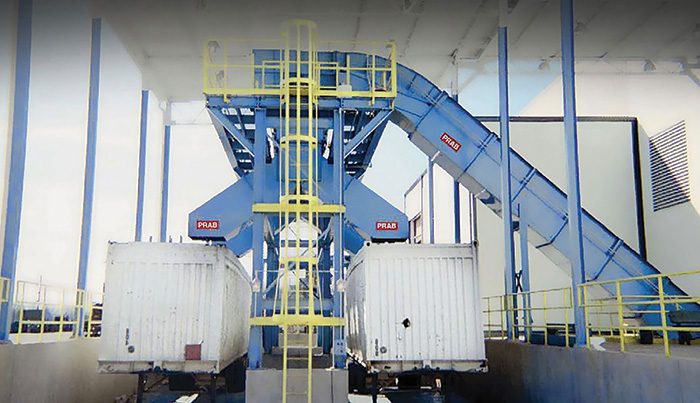When it comes to efficiency, conveyors are vital assets. Installing the right conveyor—or combination of conveyors—can raise productivity, improve workplace safety, and decrease downtime.
By Mike Hook
Conveyors must be able to withstand tough conditions and heavy materials. Operations adding or updating conveyors can improve reliability, reduce unplanned maintenance, and lower total cost of ownership through a combination of planning, engineering, automation, and maintenance. Here are some key considerations that can help avoid elevated maintenance expenses and the loss of downtime.
#1: Planning
First, identify what the goals are for the new conveyor:
• Increase efficiency/reduce downtime?
• Improve workplace safety?
• Lower total cost of ownership?
• Reduce energy costs?
• Minimize labor requirements?
In conjunction with goal setting, define the scope of the project, evaluating all possible improvements. This will help ensure that long-term operational goals are met.
Conveyors can enhance production/waste stream management at many points in the process, including:
• The transfer of finished parts
• The transfer of metal scrap and fluids away from presses
• During metal scrap processing
• Load-out
Establishing the characteristics of the material being moved is fundamental to conveyor specification. Factors to consider include:
• How heavy will the load be?
• What volume of material will need to be conveyed?
• Is the material wet or dry?
• What will the composition of the material be?
• How far is the material being moved?
• Is the material flowable?
Finally, examine footprint and configuration considerations. Knowing how far the material will have to travel and identifying challenges caused by floorspace restrictions will influence the design of the conveyor.

Images courtesy of PRAB.
#2: Engineering
The best conveyor for a given operation depends on the application, metal type, temperature, weight, plant atmosphere, and more. As a result, this creates a dynamic set of application criteria that stamping conveyors must be engineered to handle. In fact, multiple conveyor types are often used in combination to accomplish production goals.
One of the most important considerations is how the material will be introduced to the system. The impact of dropping material from considerable heights can damage the belt. It can also cause the material to bounce on the belt and work its way inside the conveyor, damaging the internal mechanics. Impact plates, load shoes, and a load bar are often necessary to prevent damage. Also, centering payloads will help prevent material from entering inside the frame. Surge loading should be avoided. Interlocking the conveyor into the equipment that is feeding it is the best way to prevent this.
Heavy loads are another problem. Taking care to ensure the conveyor’s pitch can sufficiently handle the weight and bulk density of the material is necessary for steel belt or pivot belt conveyors. Occasionally, loads weigh more than the conveyor is designed to move, which can put strain on motors. Selecting conveyors with torque-limiting protection that automatically shuts the conveyor down can help prevent equipment damage.
When it comes to the material being moved, abrasive materials can decrease the lifespan of certain wear surfaces on the conveyor. Additionally, leakproof construction will be necessary for retaining cutting fluids.
It is also critically important that the conveyor is engineered to provide a clean discharge of material to avoid carryover that can require maintenance to correct. For conveyors transferring metal scrap, even distribution of the metal scrap into storage containers can help prevent pockets of unused space inside the container. During load-out, this will help ensure the maximum amount of metal scrap is being hauled away in each container.

or combination of conveyors—can raise productivity, improve workplace safety, and decrease downtime.
#3: Automation
If conveyors are integrated into another system, especially an automated one, the controls become a critically important part of the equation. The program must be able to handle all outcomes that the automated system is capable of.
Control systems programmed to monitor conveyor performance enable operators to time preventative maintenance to minimize impact on production. They can also provide maintenance-schedule alerts. Remote monitoring systems can warn maintenance staff of a potential issue without them having to physically be at the machine.
Although controls help prevent labor-intensive, unplanned maintenance, that does not mean controls make the conveyors “hands off.” All operators will need to understand how the conveyor system will interact with an automated system, as well as startup and shut down procedures.
#4: Maintenance
Although the frequency of maintenance and inspections depends on run time, routine conveyor upkeep is to be expected. This includes:
• Lubricating bearings and rollers with an advanced lubricant
• Inspecting belts for wear and slack
Making maintenance easier saves time. Ensuring access panels are installed in key areas—such as points that may be susceptible to jams—and removable guarding can help operators complete maintenance more quickly. Additionally, certain conveyor options can help operations automate routine maintenance:
• Auto lube systems supply a small amount of clean grease or oil to conveyor bearings to ensure consistent lubrication, improving bearing performance, and eliminating the need for personnel to manually lubricate bearings.
• Auto-take up systems automatically monitor tension using load cells on chain conveyors and tightens the belt to eliminate manual adjustments and downtime. Automatic adjustments can be scheduled to be completed during low production times or shift changes.
Position Your Company
When it comes to efficiency, conveyors are vital assets. Installing the right conveyor—or combination of conveyors—can raise productivity, improve workplace safety, and decrease downtime. Stampers who invest the time upfront to carefully select their next conveyor will position their company for sustainable improvements for years to come. | WA
Mike Hook is the Director of Sales and Marketing at PRAB and has more than 15 years of mechanical design and application experience. PRAB is a leading engineer and manufacturer of conveyors, chip and fluid management systems, and industrial water and wastewater treatment equipment. PRAB’s customized solutions automate metal handling, reduce labor costs, reclaim, and recycle expensive cutting fluids/coolants, and maximize return on recycling metals. PRAB’s expertise is honed by more than 4,500 installations for the world’s leading OEMs and suppliers. The company is dedicated to continuously improving material handling, housekeeping, and compliance to environmental rules and regulations within the automotive, aerospace, medical, electronics, defense, off-road, and energy markets. For more information, visit prab.com.
